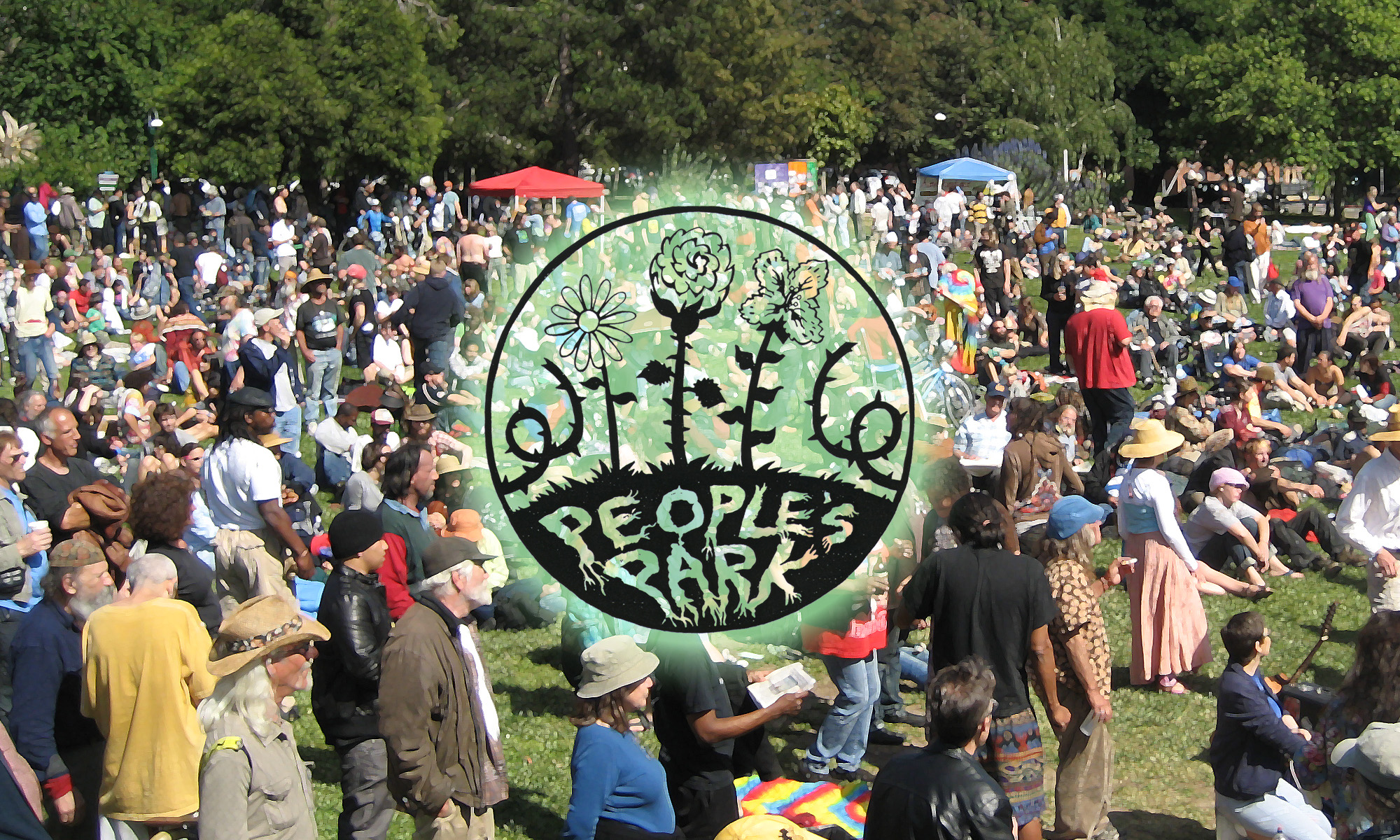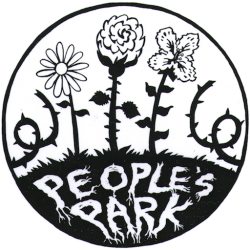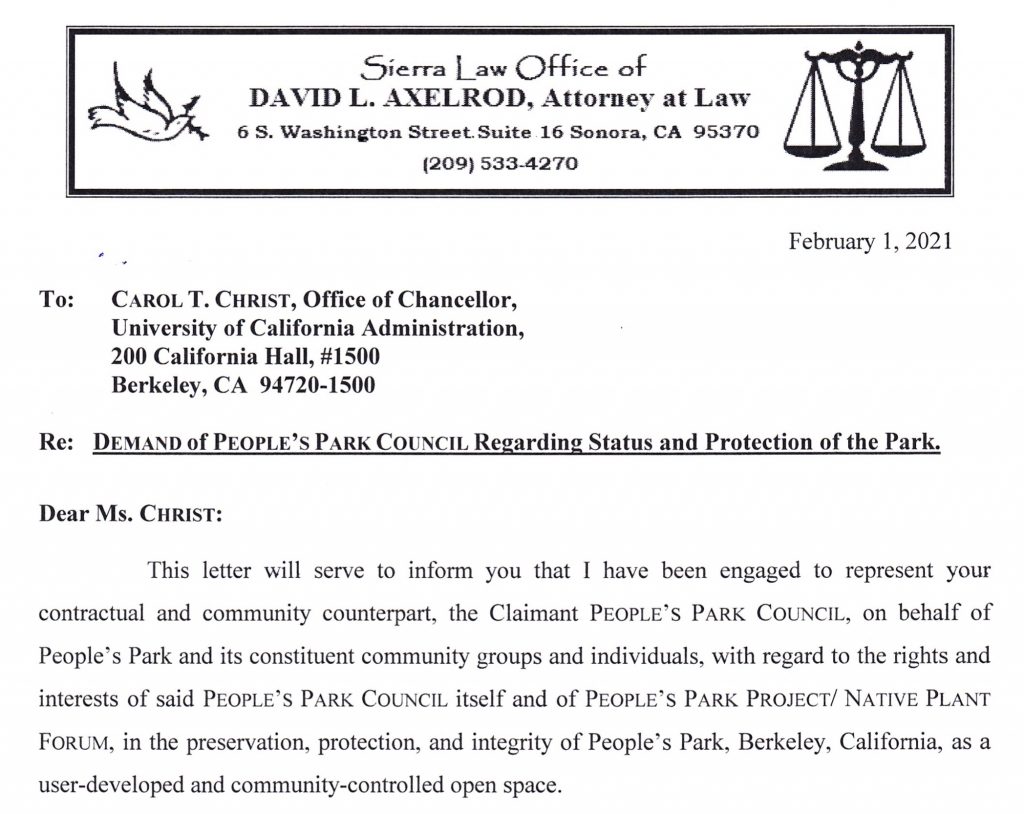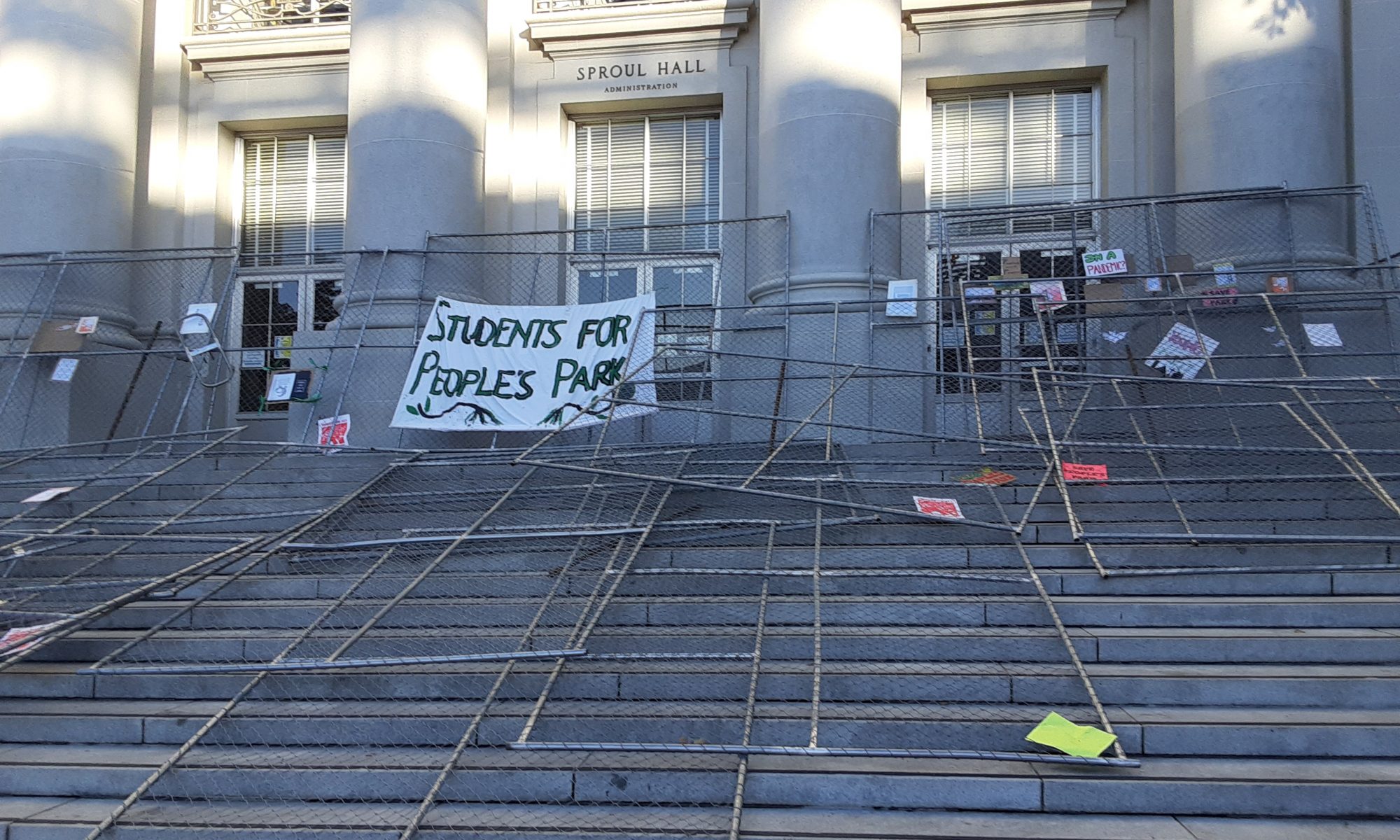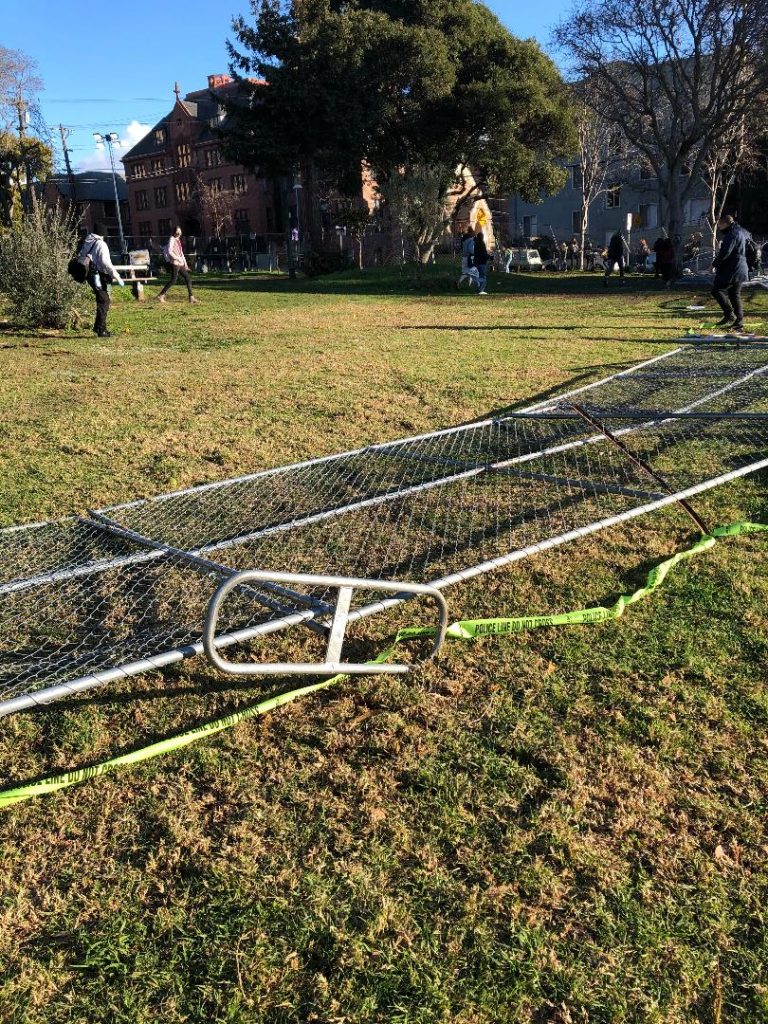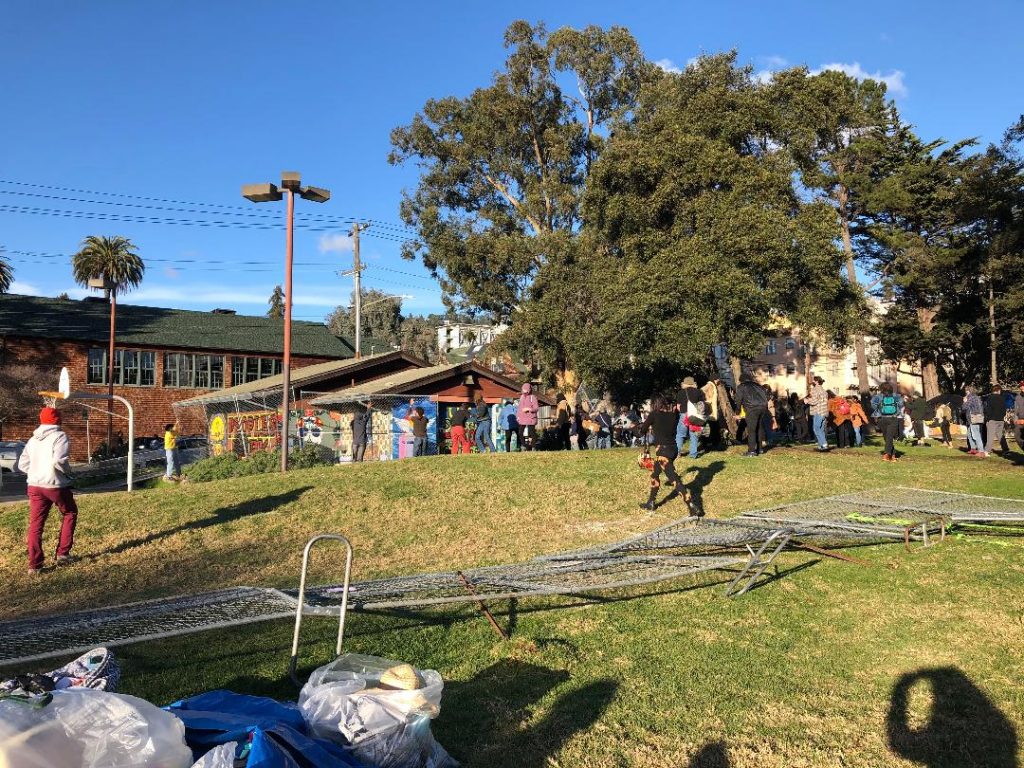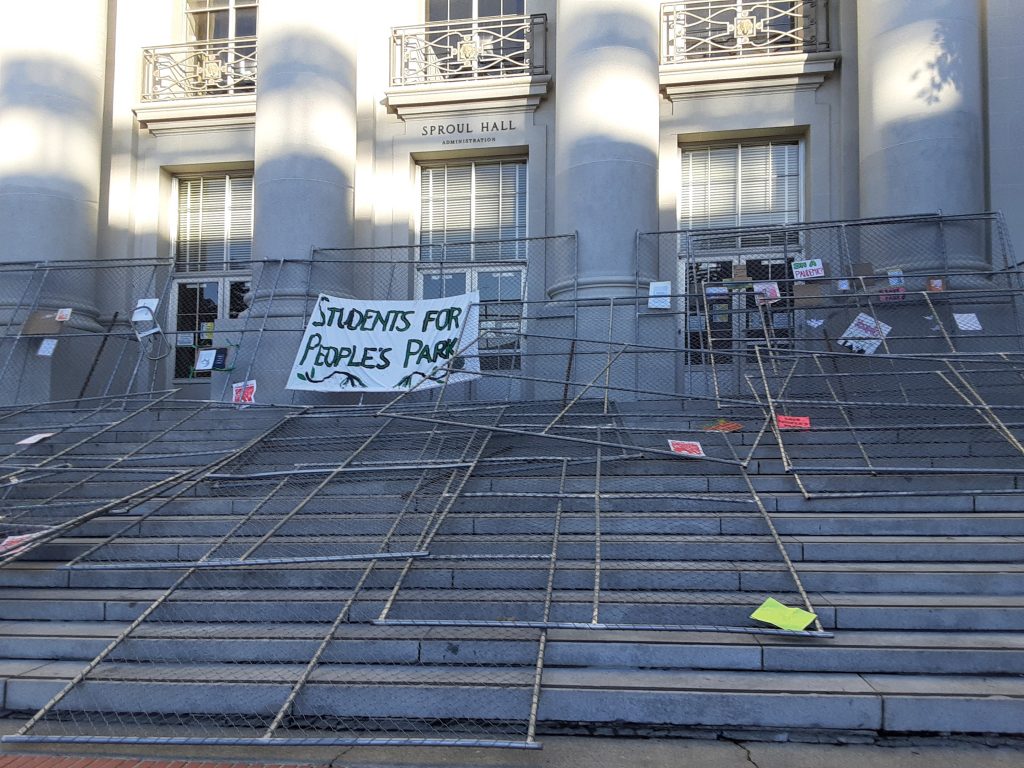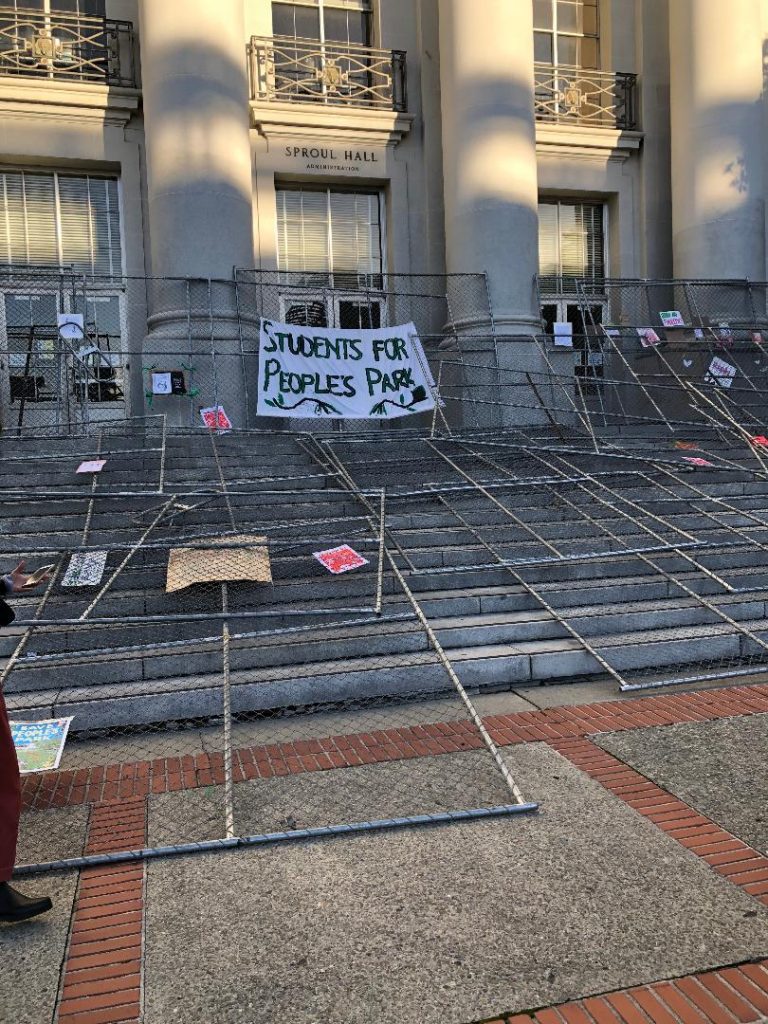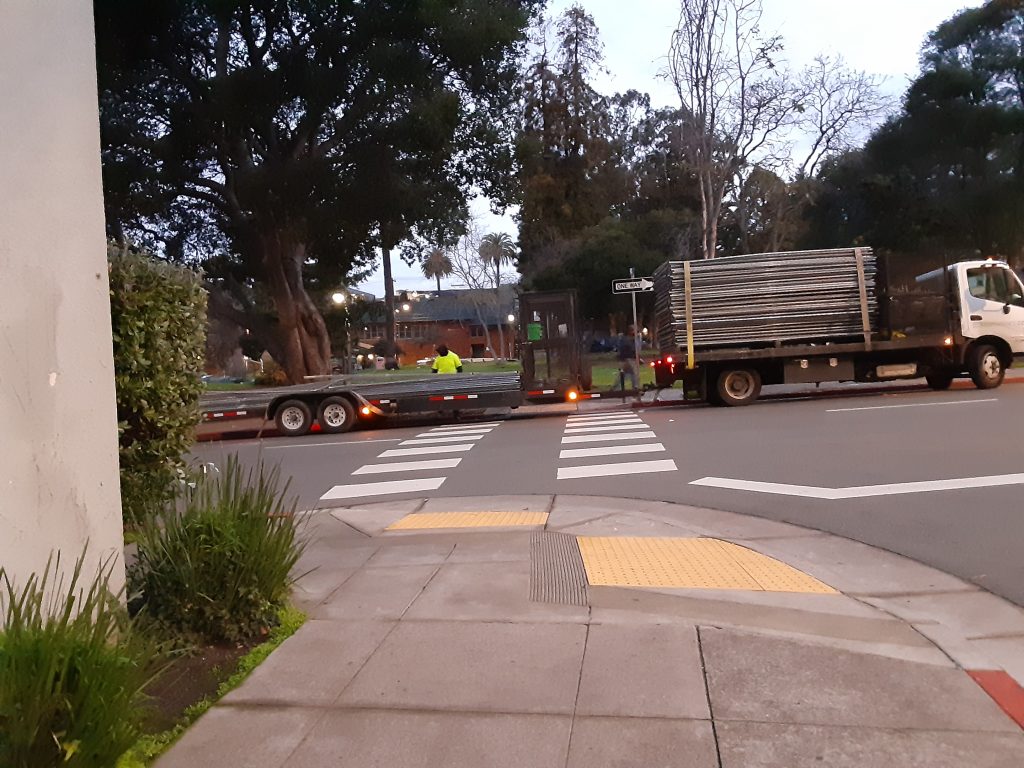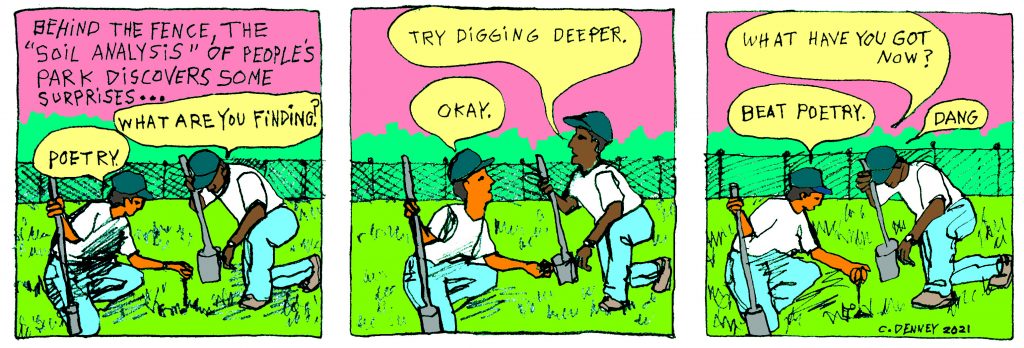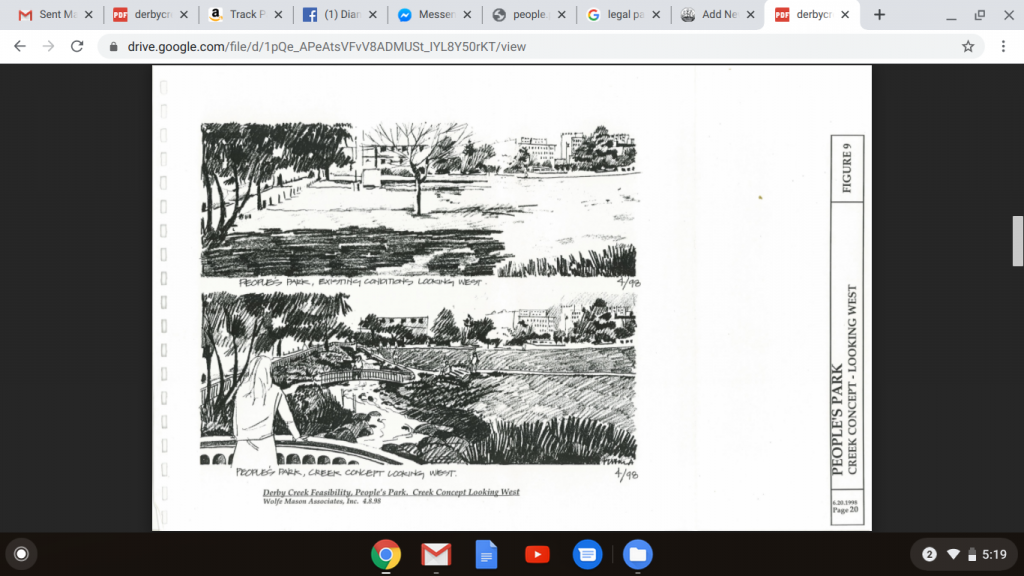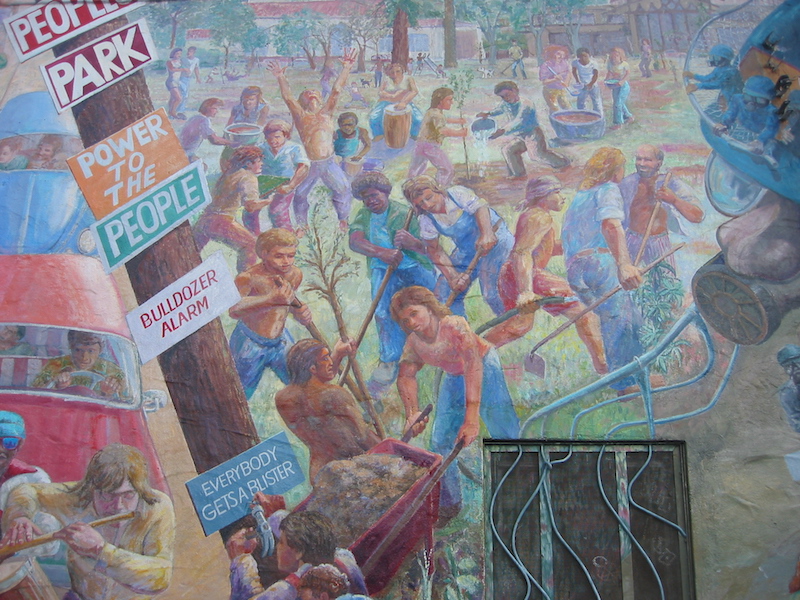In a lawsuit claiming the nearly total inadequacy of the University of California’s Environmental Impact Report (EIR) on its 2021 Long Range Development Plan and Housing Project #1 and Housing Project #2 (LRDP) a team of lawyers representing Make UC a Good Neighbor and the People’s Park Historic Advocacy Group (PPHDAG) are seeking to void approval of the LRDP and the EIR, and thereby stop all activities proposed in that LRDP. This legal action is of great importance to supporters of People’s Park since it would mean significant delays for any attempts to destroy the Park by erecting three buildings on that beloved site. It would also keep our friends at 1921 Walnut Street in their rent controlled homes for the time being.
The lead attorney in this suit, Thomas Lippe, has prevailed in two California Environmental Quality Act cases against the University of California and, because his most recent victory against UC concerned plans to build on Upper Hearst, Mr Lippe is very familiar with the 2021 LRDP. This suit wast filed on August 20, 2021 in the Superior Court of California in and for the county of Alameda.
It describes the nearly total failure of the EIR for the 2021 LEDP to adequately either describe or address the environmental effects caused by the program or projects proposed in the LRDP. Among its contentions are that the EIR fails to make required findings, fails to propose and evaluate adequate mitigation measures, fails to respond in good faith to the public comments received in response to the draft EIR, and fails to lawfully assess the LRDP’s effects on traffic, noise, air pollution, population and housing, parks and recreation, or historic and cultural resources.
This site will post any response from UC or upcoming court dates as they are announced.
— joe liesner, secretary People’s Park Historic District Advocacy Group
Donate to Lawsuit at:
People’s Park Historic District Advocacy Group
P.O. Box 1234
Berkeley, CA 94701-1234
More information at peoplesparkhxdist.org
Full text PDF:
Make UC A Good Neighbor, et al., v The Regents – LRDP Petition.pdf
